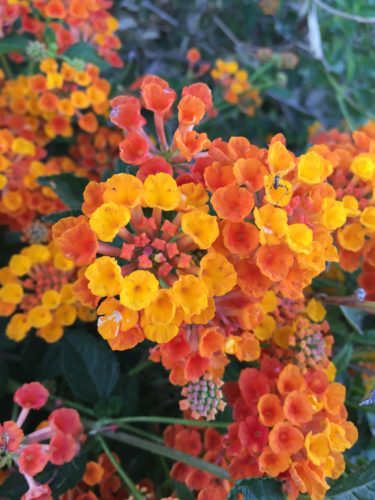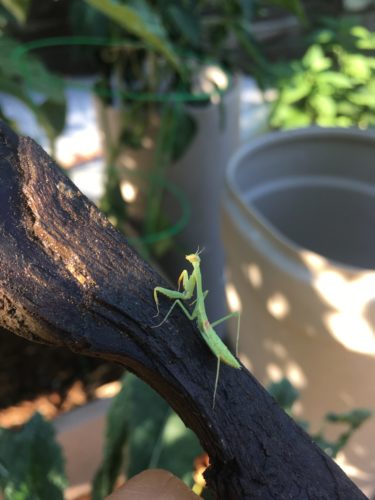
Fremontodendron; a species that explodes with beautiful yellow flowers in the Spring.
NCAT’s Western office has completed the first year of its hedgerow planting project. NCAT secured funding to provide hedgerow plants and technical assistance to farmers across California, taking us from as far south as San Diego to Crescent City in the north. All told, we delivered to 80 farmers who ran the gamut of what California offers in terms of farming systems, scale, and crops grown.
As a resilient bunch of plants, these native species have been planted in the deserts east of Los Angeles, the fog draped regions of the redwood forests, and everywhere in between.
The goal of the project was to provide habitat to native species with a mix of 18 different hedgerow plants. A special addition of Narrow Leaf Milkweed (Asclepias fascicularis) was added to the mix in an effort to grow back a tiny portion of the Monarch butterfly habitat that has been removed in the name of development over recent decades.
Hedgerows can serve many functions. Historically, hedgerows were commonplace in several European countries. They were managed to mark property boundaries and provide a dense

Revegetating a burn scar caused by last year’s fires.
barrier to reduce unwanted traffic from predators and pen-in livestock. Some turned the practice of managing hedges into a specialized skill, even an artform. Many miles of these hedges were eventually replaced due to increasing labor costs and the popularity of labor-saving tools like wire fencing. Like many innovations, the replacement of hedgerows by a more “efficient” technology came with its costs. Erosion, wind, dust, and pest pressure increased, while biodiversity decreased greatly.
Of course, every farmer has their own reason for wanting to plant a hedgerow. As we came to learn, these reasons included privacy, protection against wind, noise reduction, habitat for animals and beneficial insects, soil stabilization, supplemental food production, and beauty.
All told, if we had been able to plant in a single row, this hedgerow project would span 26 miles. And we hope to make it longer. If you are a farmer and are interested in planting a hedgerow, please contact NCAT’s Western office at 530-792-7338. We are planning to secure funding for another project like this one and hope you might be a part of it.
This blog post is produced by the National Center for Appropriate Technology through the ATTRA Sustainable Agriculture program, under a cooperative agreement with USDA Rural Development. This blog post was also made possible in-part by funding from ATTRA, CDFA Specialty Crop Block Grant (Conservation stewardship training and demonstration for specialty crop growers; investing in your farm #18-0001-034-sc), Regenerative Ag. Foundation, and Environmental Defense Fund.

 Over the course of these summer months, I’ve grown a variety of fruits and vegetables, including eggplant, tomatoes, melons, summer squash, zucchini, peppers, tomatillos, and even herbs and flowers. Since home gardening is often at a very small scale, it can allow for more time to dedicate to monitoring and tending. I’ve been able to carefully monitor my garden’s water moisture, soil quality, and plant health, as well as identify plant diseases, pests, and beneficial insects.
Over the course of these summer months, I’ve grown a variety of fruits and vegetables, including eggplant, tomatoes, melons, summer squash, zucchini, peppers, tomatillos, and even herbs and flowers. Since home gardening is often at a very small scale, it can allow for more time to dedicate to monitoring and tending. I’ve been able to carefully monitor my garden’s water moisture, soil quality, and plant health, as well as identify plant diseases, pests, and beneficial insects. Since I began gardening I’ve seen so many exciting beneficial insects with one, in particular, standing out – the Praying Mantis (Tenodera aridifloia sinesis)! Known for its bulging eyes and head that can spin 180 degrees, the praying mantis is a valuable predator to have in the garden. The praying mantis has earned its name by the way in which it waits for prey, by folding its front legs inward, which appear as praying hands. The praying mantises are stunning predators and are valuable to the garden, however, they do not pick and choose their prey and have been known to consume both pests and beneficial insects.
Since I began gardening I’ve seen so many exciting beneficial insects with one, in particular, standing out – the Praying Mantis (Tenodera aridifloia sinesis)! Known for its bulging eyes and head that can spin 180 degrees, the praying mantis is a valuable predator to have in the garden. The praying mantis has earned its name by the way in which it waits for prey, by folding its front legs inward, which appear as praying hands. The praying mantises are stunning predators and are valuable to the garden, however, they do not pick and choose their prey and have been known to consume both pests and beneficial insects.